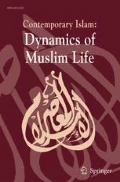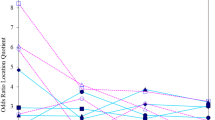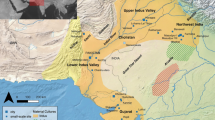Abstract
Today’s cosmopolitan Western City contains large numbers of sub-cultures within its neighbourhoods, streets and buildings that are re-configuring the norms of citizenship and place. This paper examines the role of citizenship as a sense of cultural identity, territorial belonging and place attachment in the building of three mosques in Adelaide across a 100-year time span. Starting with the colonial period and the building of the first mosque in Australia up until the post-colonial period of large-scale Muslim immigration to Australia, the paper demonstrates the forms of social organization and patronage that were created as a strategy for collective action to make the building of these mosques possible. Set against the marginal political position of Muslims in Australia throughout this period, this paper shows the creativity of social and resource mobilization to stake a claim for the ownership of land in the Western City and to define a Muslim ethnic boundary.








Similar content being viewed by others
References
Adelaide Observer (1891). p 34cd.
Adelaide Observer (1892). p 37.
Adelaide’s heritage study. (1984). Department of city planning. Australia: Adelaide.
Al-Sayyad, N., & Castells, M. (2002). Muslim Europe or Euro-Islam: politics, culture, and citizenship in the age of globalization (transnational perspectives on space and place). New York: Lexington Books.
Appadurai, A. (2003). Sovereignty without territoriality: Notes for postnational geography. In S. Low & D. Lawrence-Zuniga (Eds.), The anthropology of space and place. Locating culture (pp. 337–349). Oxford: Blackwell.
Armstrong, H. (1994). Cultural continuity in multicultural sub/urban places. In K. Gibson & S. Watson (Eds.), Metropolis now: planning and the urban in contemporary Australia. Sydney: Pluto Press.
Australian Council on Population and Ethnic Affairs (ACPEA). (1982). Multiculturalism for all Australians. Our developing neighbourhood. Canberra: Australian Government Publishing Service.
Banton, M. (2007). Max Weber on ‘ethnic communities’: a critique. Nations and Nationalism, 13(1), 19–35.
Barth, F. (Ed.). (1969). Ethnic groups and boundaries: the social organisation of cultural difference. Bergen-Oslo: Universitets Forlaget.
Bell, P. (1993). Multicultural Australia in the media. Canberra: Australian Government Publishing Service.
Bouma, G. D. (1994). Mosques and Muslim settlement in Australia. Canberra: Bureau of Immigration, Multicultural and Population Research.
Brubaker, R. (2004). Ethnicity without groups. Cambridge: Harvard University Press.
Burayidi, M. (2000). Urban planning as a multicultural canon. In M. Burayidi (Ed.), Urban planning in a multicultural society. Westport: Praeger.
Burnley, I., Murphy, P. & Fagan, R. (1997). Immigration and Australian cities. Sydney: Federation press.
Carnes, J. C. (1984). Moslem Albanians in North Queensland. Lectures on North Queensland History, 4, 184–194.
Centre for Muslim Minorities and Islam Policy Studies (CMMIPS). (2009). Report on: Muslim voices: hopes and aspirations of Muslim Australians. Australia: Department of Immigration and Citizenship.
Cerulo, K. (1997). Identity construction: new issues, new directions. Annual Review of Sociology, 23, 385–409.
Chai, S. (2005). Predicting ethnic boundaries. European Sociology Review, 21(4), 375–391.
Choo, C. (1993). The impact of Asian-Aboriginal Australian contacts in Northern Australia, particularly the Kimberley, Western Australia. Paper presented to the Asia-Pacific Migration Affecting Australia: Temporary, Long-term and Permanent Movements of People, 14–17 September, Darwin.
Committee on Discrimination Against Arab Australians with the Committee of Arab Australians. (1990). Documentation of incidents of harassment of, and racism towards, Australians of Arab descent and Australian Muslims: August–October 1990. Clifton Hill: Committee on Discrimination Against Arab Australians.
Cornell, S. (1996). The variable ties that bind: content and circumstance in ethnic processes. Ethnic and Racial Studies, 19(2), 265–289.
Dunn, K. (2001). Representations of Islam in the politics of mosque development in Sydney. Tijdschrift voor Economische en Scoaiale Geografie, 92(3), 291–308.
Eade, J. (2013). Crossing boundaries and identification processes. Integrative Psychology Behaviour. doi:10.1007/s12124-013-9244-0.
Ebaugh, H. R., & Chafetz, J. S. (2000). Religion and the new immigrants: continuities and adaptations in immigrant congregations. New York: Altamira Press.
Ethnic Affairs Commission of New South Wales. (1985). Eighteen years after: the Turkish settlement experience in NSW. Interim report. Sydney: Ethnic Affairs Commission of NSW.
Fincher, R., & Jacobs, J. M. (Eds.). (1998). Cities of difference. Guildford: Guildford Press.
Germain and Gagnon, (2003). Planning Theory and Practice, 4(3).
Ganter, R. (2008). Muslim Australians: the deep histories of contact. Journal of Australian Studies, 32(4).
Goffman, E. (1975). Stigmate. Les usages sociaux des handicaps. Paris: Minuit.
Gold, J. (1982). Territoriality and human behaviour. Progress in Human Geography, 6, 44–67.
Grafmeyer, Y. (1999). La coexistence en milieu urbain: echange, conflits, transactions. Recherches Sociologiques, 1, 157–176.
Grassby, A. (1973). A multicultural society for the future. Canberra: Department of Immigration/Australian Government Publishing Service.
Greider, T., & Garkovich, L. (1994). Landscapes: the social construction of nature and the environment. Rural Sociology, 59(1), 1–24.
Hage, G. (2000). White nation: fantasies of white supremacy in a multicultural society. London: Routledge.
Holston, J. (1999). Cities and citizenship. Durham: Duke University Press.
Holston, J., & Appadurai, A. (1996). Cities and citizenship. Public Culture, 8(2), 187–204.
Human Rights and Equal Opportunity Commission (HREOC). (1991). Racist violence. Report of the national inquiry into racist violence in Australia. Canberra: Australian Government Publishing Service.
Jacobs, J. M. (1996). Edge of Empire: post-colonialism and the city. London: Routledge.
Jacobs, J. M. (1998). Staging difference: Aestheticization and the politics of difference in contemporary cities. In R. Fincher & J. M. Jacobs (Eds.), Cities of difference (pp. 252–279). Guildford: Guildford.
Jones, P.G., & Kenny, A. (2007). Australia’s Muslim cameleers: pioneers of the Inland 1860s–1930s. Wakefield Press
Jordens, A. M. (1997). Alien to citizen: settling migrants in Australia, 1945–75. St Leonards: Allen and Unwin in Association with the Australian Archives.
Kheir, M. (1991). Community profile of the Lebanese Muslim community. Lakemba: Lebanese Muslim Association.
Kihato, et al. (Eds) (2010) Urban diversity: Space, culture and inclusive pluralism in cities worldwide. Baltimore: John Hopkins University Press.
Kintrea, K., et al. (2008). Young People and territoriality in British cities. Joseph Rowntree Foundation.
Klauser, F. R. (2012). Thinking through territoriality: introducing Claude Raffestin to Anglophone sociospatial theory. Environment and Planning D: Society and Space, 30(1), 106–120.
Knox, P. (1982). The social production of the built environment. Ekistics, 49, 291–297.
Lalli, M. (1992). Urban-related identity: theory, measurement, and empirical findings. Journal of Environmental Psychology, 12, 285–303.
Low, S. M., & Altman, I. (1992). Place attachment: A conceptual inquiry. In I. Altman & S. M. Low (Eds.), Place attachment (pp. 1–12). New York: Plenum.
Lynch, K. (1960). The image of the city. Cambridge: MIT Press.
Mackie, F. (1983). Structure, culture, religion in the welfare of Muslim families: a study of immigrant Turkish and Lebanese men and women and their families living in Melbourne. Canberra: Australian Government Publishing Service.
Malmberg, T. (1980). Human territoriality: survey of behavioural territories in man with preliminary analysis and discussion of meaning. The Hague: Mouton.
Manderson, L. (1988). Malays. In J. Jupp (Ed.), The Australian people (pp. 691–693). Sydney: Angus and Robertson.
Meinig, D. W. (1979). Symbolic landscapes: Models of American community. In D. Meinig (Ed.), The interpretation of ordinary landscapes (pp. 164–192). New York: Oxford University Press.
Multicultural Life, SAMEAC’s 25th Anniversary (2005). Special Feature: Fred Shahin OAM,1, 14.
Nagel, J. (1994). Constructing ethnicity: creating and recreating ethnic identity and culture. Social Problems, 41(1), 152–176.
Olzak, S. (2006). The global dynamics of racial and ethnic mobilization. Stanford: Stanford University Press.
Pratt, D. (2011). Antipodean Ummah: Islam and Muslims in Australia and New Zealand. Religion Compass, 5(12), 743–752.
Raffestin, C. (1976). Peut-on parler de codes dans les sciences humaines et particulierement en geographie? L’Espace Geographique, 3, 183–188.
Raffestin, C. (1980). Pour une geographie du pouvoir. Paris: LITEC.
Raffestin, C. (1986). Territorialite: concept ou paradigme en geographie sociale? Geographica Helvetica, 2, 91–96.
Rashid, M., & Bartsch, K. (2014). Architecture of the Adelaide Mosque: hybridity, resilience and assimilation. TDSR, 25(11), 65–75.
Relph, E. (1976). Place and placelessness. London: Pion Limited.
Remy, J. (1992). La transaction, une method d’analyse: contribution a l’emergence d’un nouveau paradigm. Environnement et Societe, 17, 9–31.
Remy, J. (1998). Villes, espaces publics et religions: recits d’esperance et pratiques quotidiennes. Social Compass, 45(1), 23–42.
Review of Migrant Services and Programs. (1978). Report of the review of migrant services and programs (Galbally Report). Canberra: Australian Government Publishing Service.
Riis, O. (1998). Religion re-emerging. The role of religion in legitimating integration and power in modern societies. International Sociology, 13(2), 249–272.
Ryden, K. C. (1993). Mapping the invisible landscape: folklore, writing, and the sense of place. Iowa City: University of Iowa Press.
Sacks, R. (1986). Human territoriality: its theory and history. Cambridge: Cambridge University Press.
Saeed, A. (2003). Islam in Australia. Crows Nest: Allen and Unwin.
Sandercock, L. (2000). When strangers become neighbours: managing cities of difference. Planning Theory and Practice, 1(1), 13–30.
Sandercock, L. (2003). Planning in the ethno-culturally diverse city: a comment. Planning Theory and Practice, 4(3), 319–323.
Smith, T. L. (1976). Religion and ethnicity in America. In G. E. Pozzetta (Ed.), The immigrant religious experience, 19, American immigration and ethnicity series. New York /London: Garland.
Spickard, P., & Burroughs, W. J. (2000). We are a people: narrative and multiplicity in constructing ethnic identity. Philadelphia: Temple University Press.
Stevens, C. (1989 and 2003). Tin mosques & ghantowns: History of afghan cameldrivers in Australia. Melbourne: OUP Australia and New Zealand.
Thompson, S. (2003). Planning and multiculturalism: a reflection on Australian local practice. Planning Theory and Practice, 4(3), 275–293.
Tilly, C. (1978). From mobilisation to revolution. Englewood Hills: Prenctice hall.
Tuan, Y. F. (1977). Space and place: the perspective of experience. Minneapolis: University of Minnesota Press.
Tuan, Y. F. (1980). Rootedness versus sense of place. Landscape, 24, 3–8.
Wallman, S. (1986). The boundaries of ‘race’: processes of ethnicity in England. Man, 13(2), 200–217.
Warner, R. S., & Wittner, J. G. (Eds.). (1998). Gatherings in Diaspora. Religious communities and the new immigration. Philadelphia: Temple University Press.
Watson, S., & McGillivray, A. (1995). Planning in a multicultural environment: A challenge for the nineties. In P. Troy (Ed.), Australian cities: issues, strategies and policies for urban Australia in the 1990s. Melbourne: Cambridge University Press.
Waxman, L. (2006). The coffee shop: social and physical factors influencing place attachment. Journal of Interior Design, 31(3), 35–53.
Weber, M. (1978). Economy and society. An outline of interpretive sociology. Berkeley and Los Angeles: University of California Press.
Wimmer, A. (2008). The making and unmaking of ethnic boundaries: a multilevel process theory. American Journal of Sociology, 113(4), 970–1022.
Wimmer, A. (2013). Ethnic boundary making. Institutions, power, networks. Oxford: Oxford University Press.
Yasmeen, S. (Ed.). (2010). Muslims in Australia: the dynamics of exclusion and inclusion. Melbourne: Melbourne University Press.
Young, I. (1990). The ideal of community and politics of difference. In L. J. Nicolson (Ed.), Feminism/postmodernism. New York: Routledge.
Acknowledgments
I would like to thank the generous Visiting Scholarship grant at the International Centre for Muslim and non-Muslim Understanding at the University of South Australia and Professor Salman Sayyid for the opportunity to run a Symposium entitled ‘ReOrienting Diverse Space: Neighbourhoods, identity and citizenship’ which formed the basis for this paper. I would like to also thank Zoe Garnaut, City of Charles Sturt Council, Planning Department, Adelaide; Linda Lacey, City of Charles Sturt Council, Cultural Heritage Project Officer, Community Projects Unit, Adelaide; Toufic Kaissi, TK Building, Adelaide Architect; Sher’ee Ellis, Register Clerk, State Heritage Unit, People, Parks and Places, Department of Environment, Water and Natural Resources, South Australian Government; Dr. Minerva Nasser-Eddine, Research Fellow, International Relations, School of International Studies, Flinders University; Charlie Shahin, Director, Peregrine Corporation Pty Ltd; and Dominic Scutella, Architect, for their invaluable support in providing the material needed to write this paper. I would like to thank the three reviewers of this paper who gave constructive comments.
Author information
Authors and Affiliations
Corresponding author
Rights and permissions
About this article
Cite this article
Nasser, N. Patronage and territoriality: Islamizing space in the Western city. Cont Islam 9, 291–319 (2015). https://doi.org/10.1007/s11562-015-0344-0
Published:
Issue Date:
DOI: https://doi.org/10.1007/s11562-015-0344-0




